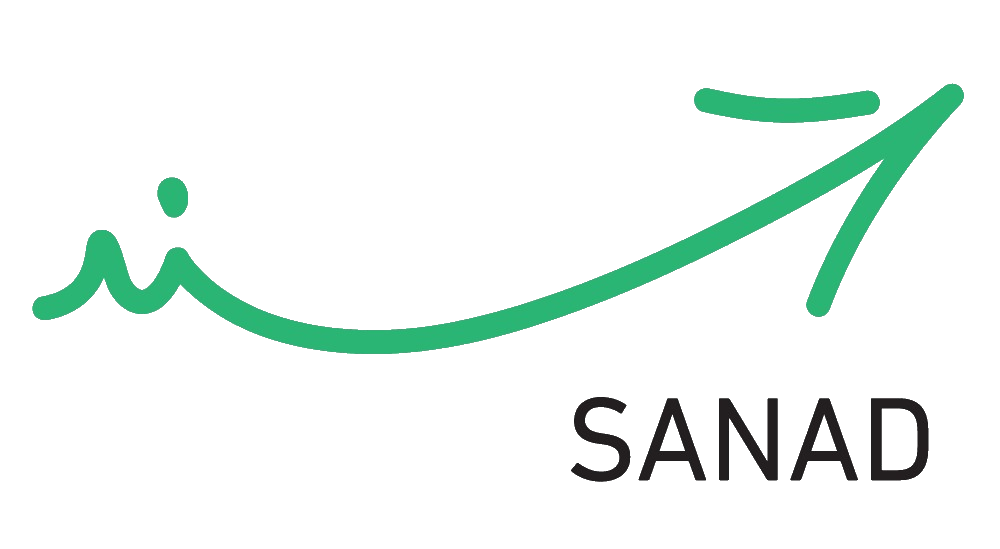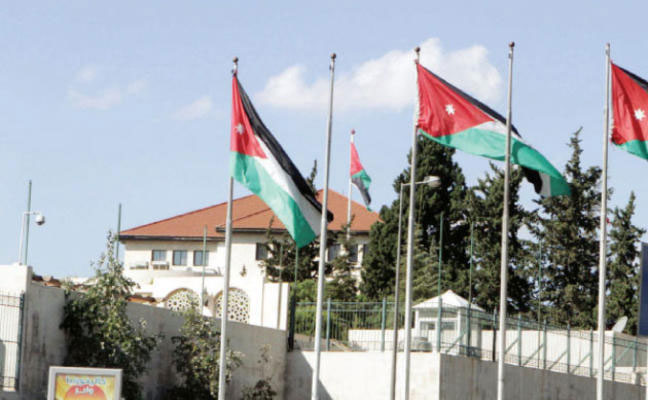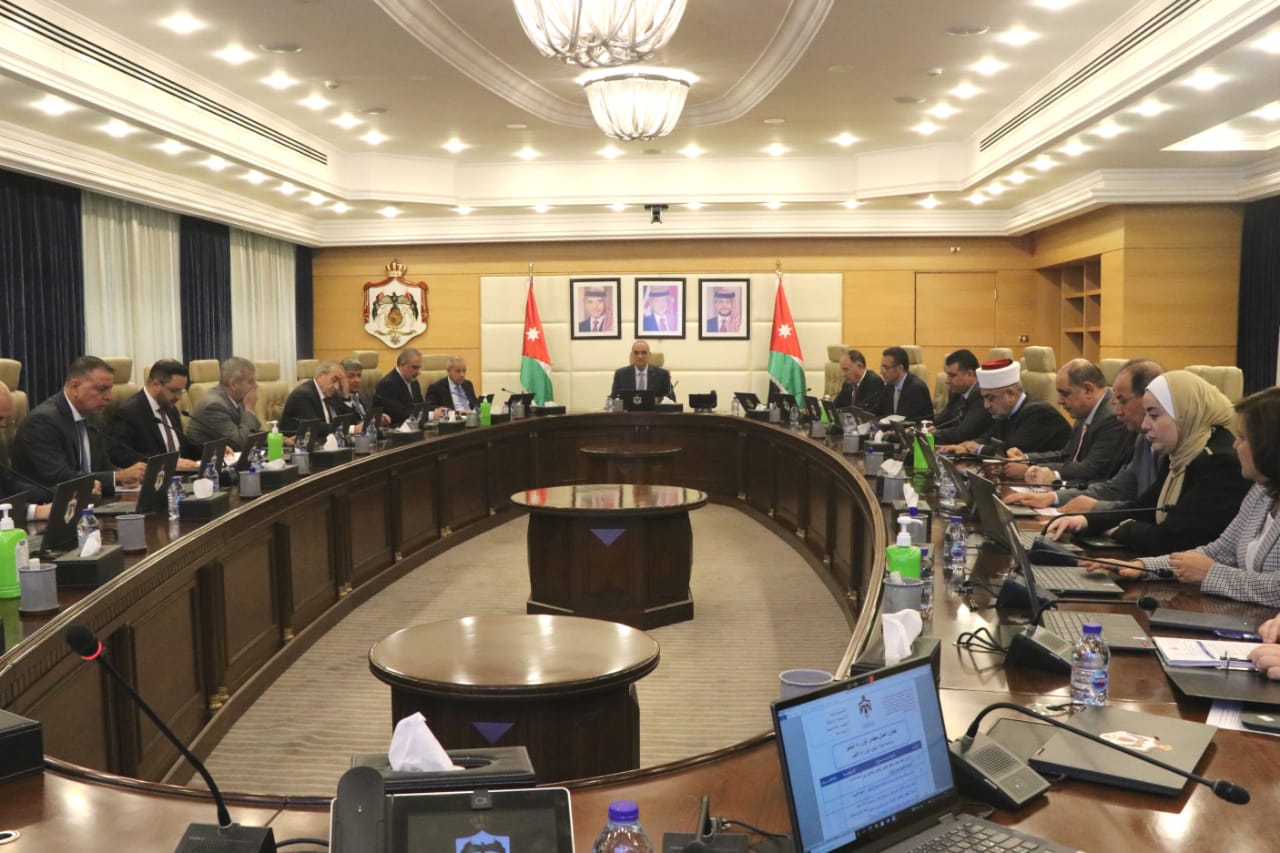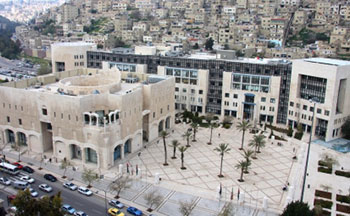 Department of Antiquities
Department of Antiquities
Department of Antiquities
General Information
Historical Background:
The Jordanian Department of Antiquities was established in 1923 as part of the Department of Palestinian Antiquities run by Mr. George Horsefield. It had a director, a director general, and a governor, who were directly connected to the undersecretaries of the Department. The Department was also responsible for tourism. Dr. Rida Tawfiq, who was also undersecretary, was appointed director. The Jordanian Department of Antiquities became independent from the Palestinian Department of Antiquities following the Primary Law of 1928. Dr. Rida Tawfiq then transferred the offices of the Department from Jerash to Amman, the capital. In 1934, the Antiquities Law no. 24 for the year 1934 was issued. This was the first antiquities law in Jordan. It was amended more than once. The last amendment came in 1988.
The objective of the establishment of the Jordanian Department of Antiquities in 1923 was to protect the antiquities of the country and to collect antiquities that were scattered all over the country and those in the hand of civilians. This was in accordance with the law by which the Department was created. The law that was issued in 1934 and amended more than once (last amendment in 1988) specified the objectives of the Department in a more accurate way. Law no. 21 for the year 1988 defined antiquities as any movable or immovable object constructed, made, inscribed, built, discovered
or modified by man prior to 1700 AD, including caverns, sculptures, coined articles, pottery, manuscripts and all articles related to the birth and development of sciences, arts, crafts, religions and traditions of past civilizations, or any part thereto added or reconstructed following that date.
From the administrative point of view, the Department of Antiquities is considered one of the
independent departments in Jordan. It has its own budget that is managed by a Director General, who is undersecretary, and directly linked to the Minister of Tourism and Antiquities.
Since its birth in 1923 until today, the Department of Antiquities has had 16 directors, some of which served more than one term of office. Dr. Rida Tawfiq was the first Director General of the Jordanian Department of Antiquities, from 1923 until 1928. He was succeeded by Mr. Tawfiq Abu Al-Huda, who was in this post until 17/10/1929. Mr. Abu Al-Huda was succeeded by Mr. Ala’ Al-Din Bek Touqan until 22/2/1931. Mr. Touqan was in turn succeeded by Mr. Adeeb Bek Al-Kayed Al-Awamleh until 18/10/1933. Mr. Hisham Kheir was Director General during the period from 18/10/1933 until 5/8/1939. During this period, and precisely in 1934, the Antiquities Law no. 24 was issued. It was the first antiquities law to be issued in Jordan. Mr. Lancaster Harding was Director General of Antiquities from 1939 until 1956. He had been previously “borrowed” from the government of Palestine on 1/8/1933 to work as antiquities inspector for the Jordanian Department of Antiquities.
National cadres then started heading the Jordanian Department of Antiquities. In 1956, Dr. Abdel Karim Gharaibeh was appointed Director General of Antiquities, followed by Mr. Saeed Al-Durra from 1956 until 1959. Dr. Awni Dajani succeeded Mr. Al-Durra and stayed from 1959 until 1968. Dr. Dajani was the first Jordanian to obtain a Ph.D. in archaeology. In 1968, he was succeeded by Mr. Mikhail Jumean, and in 1968-1971 by Mr. Yacoub Oweis. He was reappointed Director General during the period from 1972 until 1977. Mr. Mansour Bataineh had headed the Department in 1971-2. From 1977 until 1989, Dr. Adnan Hadidi was Director General of the Department. He was succeeded by Dr. Ghazi Bisheh, who headed the Department until 1991. Dr. Safwan Al Tal was Director General of the Department from 1991 until 1994, when Dr. Ghazi Bisheh was reappointed and stayed as Head of the Department until 1999. The current Director General of the Department is Dr. Fawwaz Al-Khraysheh.
The year 1951 marks an important date in the history of the Department of Antiquities. It is the year of the first issue of the annals of the Jordanian Department of Antiquities. It was also the year during which the construction of the Jordanian Archaeological Museum in the Citadel area commenced. These two achievements may be considered the beginning of continuous development in creating a department that is truly capable of working in the field of Jordanian antiquities, as well as carrying out the duties envisaged in the provisions of Paragraph A, of Article 3, of the Antiquities Law no. 21 for the year 1988.
These provisions are:
1. The implementation of the government’s policy in the field of archaeology.
2. The evaluation of the archaeological character of artifacts and archaeological sites and their importance.
3. The management of archaeological sites in Jordan, their supervision, protection, maintenance, preservation, registration and exhibition.
4. The raising of archaeological awareness and the establishment of institutes and archaeological museums.
5. The organization of archaeological excavation missions in Jordan
6. Aid in organizing museums that carry out activities that are relevant to the government’s commitments, including historical, art and folk museums.
7. Cooperation with local, Arab and foreign archaeological parties to benefit the national heritage; the raising of awareness in archaeological issues, in accordance with the laws and regulations that are in force.
8. The monitoring of the possession of artifacts of archaeological importance, and their use in accordance with the Antiquities Law, and the regulations, decisions and directives that are issued accordingly.
Since 1951, the Department of Antiquities was aware of the national and scientific responsibilities that it had to live up to. It was also aware that archaeology was a science that was new to the Arab region, and that it dated back to the end of the 19th century the beginning of the 20th century. Based on the realization of these facts, the Department of Antiquities started working on the infrastructure that is necessary for archaeological work. This included the enlargement of the divisions of the Department, the creation of new divisions for documentation (such as the Division for Archaeological Information and Documentation) and the technical lab. In addition to this, antiquities offices were opened where necessary. There are 18 such offices all over Jordan. Archaeological and heritage museums were also opened in a number of cities in Jordan. The Department of Antiquities also helped in the creation of university museums and in the organization of seasonal museums (exhibitions) both in Jordan and abroad.
The development in infrastructure went hand in hand with the endeavors to train the employees of the Department, so as to ensure their capacity to carry out their work. At the same time, the Department of Antiquities sought to attract Jordanians who are highly qualified and prepared in the fields of archaeology and history, to train these individuals and allow them to acquire practical experience in fieldwork. This was possible thanks to the training courses that were held both in Jordan and in other countries, and by means of the participation of the Department’s employees in archaeological excavation missions organized by the universities and by the foreign scientific institutions operating in Jordan. In order to upgrade the scientific preparation of its employees, the Department of Antiquities encouraged its employees to participate in scientific conferences and seminars both in Jordan and abroad. It also sought to provide a number of scholarships for Ph.D. degrees (more than ten employees were sent by the Department to study for their Ph.D.).
Directorates and Divisions:
The Directorate of Archeological Excavations and Surveys:
Its duties are to supervise archaeological fieldwork, whether foreign or local archaeological missions, including the work of the Department of Antiquities itself, carry it out. The Directorate examines all the requests of excavation and archaeological survey that are presented to the Department (including the projects of the Department of Antiquities). It approves or rejects such requests in accordance with the archaeological strategy of Jordan that is governed by the Antiquities Law no. 21 for the year 1988 and the instructions for excavations and archaeological surveys issued by the Department in accordance with the provisions of the above-mentioned law. The Directorate carries out follow-up work of the implementation of all the projects of the missions that obtained the authorization to carry out excavations or archaeological survey missions in Jordan; ascertains the seriousness of these missions, their commitment to the work plan that they presented to the Department of Antiquities, their respect of correct excavation methods (methods of excavation, archaeological survey, documentation of finds and historical data extraction). This is achieved by means of the Department of Antiquities representatives that are associated with both national and foreign missions, and by means of inspection visits to both Department and foreign archaeological missions.
The duties of the Directorate have been divided among its four divisions:
1. Archeological Excavation Division: Examines the plans presented to the Department of Antiquities with the requests for excavation permissions. The Division recommends their approval or rejection, carries follow-up work of the approved projects and ensures their respect of the plan presented; it ensures that preliminary reports of the work of the projects are prepared, checks their correspondence with the registers of archaeological finds, expresses its view on allowing the missions to borrow the finds for research purposes and hands over the finds to the Department of Antiquities.
2. Archeological Surveys and Transversal Excavations Division: Examines the requests presented to the Department of Antiquities with the aim of obtaining permissions for carrying out archaeological surveys in Jordan and the follow-up of such surveys, immediate inspection of the areas surveyed and the drawing up of plans for excavation in coordination with the local cadres. The Division gives priority to the archaeological survey and excavation of areas that are threatened by the projects of tourism or infrastructure development, in coordination with the division for periodical excavations and the antiquities offices in Jordan.
3. Documentation and Archeological/ Electronic Mapping Division: Documents architectural elements and sequencing of archaeological discoveries in the sites excavated by the Department of Antiquities. Conducts the drawing up of the archaeological finds in the sites examined and their publication.
4. Permanent Projects Division: Coordinates between the various permanent national projects. It contributes to drawing-up plans of action of these projects by revising them and giving directives, by periodical follow-up of such projects, and by evaluating their achievements by means of field inspections and by reviewing the periodical reports presented to the Department by the directors of the projects.
The Operating Mechanism of the Directorate of Archeological Excavations and Surveys: The Directorate for Archaeological Excavations and Surveys together with its various divisions, refers to the Antiquities Law no. 21 for the year 1988, and the provisions of this law relating to archaeological excavation and survey.
The Directorate of Studies and Research:
This is the scientific and information branch of the Department of Antiquities. It provides all types of scientific publications and reports and publishes and distributes information and studies related to antiquities in Jordan. It is divided into three divisions: the Library, the Division for Documentation and Archeological Information, and the Division for Research and Publication
1. The Library: The library is one of the basic pillars of any scientific institution. The Department’s conviction of its importance, led it to create the nucleus of the library in 1928. The Department has provided maximum support to its library, which has become one of the best libraries specialized in archaeology in Jordan.
It contains approximately seven thousand volumes, including books and periodicals (these include a collection of rare books and periodicals) in Arabic, English, German, French, Italian and Spanish. The publications of the library are concerned with archaeology and related disciplines, including the archaeology and history of the Fertile Crescent in general, and the archaeology and history of Jordan in particular. The system used for the classification of the books is the Anglo-Saxon system of classification, while the periodicals are alphabetically classified. The Department exchanges its publications with the publications of national and international scientific institutions, and buys the publications that cannot be obtained by exchange.
The library is open to all those interested in the archaeology and history of Jordan. Researches from the Department, professors and students from Jordanian universities and members of foreign archaeological missions and others often frequent the library. However, only the employees of the Department may borrow from the library. Non-employees may photocopy any articles of interest using the photocopying machine at the library for only 20 fils per copy.
2. The Division for Archaeological Information and Documentation: In 1971, this division was created and was called the Registry Division. Its duties include the collection of unpublished preliminary reports that the directors of projects must present to the Department of Antiquities at the end of each season, together with plans, photographs, slides and project drafts, together with a special register of all the archaeological finds that were discovered. Another duty of the Division is the collection of the reports to be presented by the Department’s representatives that work in both Jordanian and foreign excavation missions. The Division also keeps one copy of all the publications of all archaeological missions on their excavations in Jordanian sites. These publications are classified according to a system that guarantees easy access to the information on the antiquities of Jordan. However, when such information is used for scientific research, copyrights must be respected.
The Division also has a collection of detailed maps of different scales on Jordan, (1:50000), (1:100000), (1:250000), (1:25000) and a group of aerial photographs that cover a good part of Jordan.
Considering the remarkable archaeological activities and the expansion of construction in Jordan over the past century, the need for adopting new methods of collecting and preserving information on the antiquities of Jordan rose. The new methods must guarantee easy and quick access to the basic information on archaeological sites in Jordan, whether for the purposes of scientific research or development planning.
During the past century and towards the beginning of the 90s, a project for the computerization of such data (JADIS) was born. Information on more than ten thousand archaeological sites has so far been computerized.
3. The Division for Research and Publication: It is responsible for all the publications of the Department, whether books, magazines, bulletins, etc., as well as the review of all archaeological information sheets distributed in museums or found on archaeological sites. It evaluates all the written information that the Department seeks to communicate to the public (whether specialized or not) and edits all material, thus taking care of the linguistic, technical and archaeological aspects.
It is a great responsibility and in order to guarantee the quality of the publications, certain standards must be respected in all the scientific materials presented for publication, whether within the annals of the Department or within the studies on the history and archaeology of Jordan.
The Department of Antiquities has published many scientific works including:
· The Annals of the Department of Antiquities: The first issue of the Annals was published in 1951. Issue 45 for the year 2001 is currently under print. Each volume is sold for 15JD.
· Studies on the Archaeology and History of Jordan: The publication of research presented to the international conference on the history and archaeology of Jordan, held every three years. Seven volumes have so far been published. Each volume is sold at 15 JD.
· The Antiquities Magazine: First issued in 1988, a yearly magazine in Arabic issued by the Division for Archaeological Information and Documentation. Four issues have been published so far. It is a magazine detailing the achievements of Jordanian archaeologists, and aims at building awareness in the field of archaeology among the lay people. It is distributed free of charge.
The Directorate of Laboratories and Museums:
It is responsible for the material presentation of archaeological finds and has two divisions:
1. The Laboratory Division: This division is responsible for the maintenance of archaeological finds from all the Departments projects, independent of the material from which they were made (metal, clay, bone, etc.), the preparation of studies and research on these finds, and their exhibition in museums or their storage. The degree of maintenance required depends on the state in which the artefacts were found and the material used in their making and may include interventions such as cleaning, strengthening and restoration, The Laboratory Division also deals with human bones discovered during archaeological excavations. It carries out the necessary anthropological studies on the skeletons, whether they are complete or partial.
2. The Museums Division: This division supervises all the museums that the Department of Antiquities is responsible for (approximately 15). It works on improving these museums in accordance with the objectives of their establishment. These museums, concerned with both archaeology and heritage, exhibit the Jordanian heritage that was uncovered by means of archaeological excavation and ethno-archaeological survey, The Department of Antiquities’ objective in creating museums, both archaeological and heritage museums, is to introduce the heritage of Jordan and the importance of its preservation into the lives of Jordanian citizens. It also aims at encouraging tourism, which is one of the important resources of the Jordanian economy.
The Directorate of Cultural and Public Relations:
This Directorate is responsible for the enhancement of the relations between the Department of Antiquities and other relevant bodies, whether local, Arab or foreign, as well as the local community. It is also responsible for the creation of new relations that may help the Department carry out its duties, both at the scientific and practical levels.
The responsibilities of the Directorate are divided among four divisions: Public Relations, Cultural Relations, Awareness and Press.
1. Public Relations Division: This division is concerned with the organization of the scientific and cultural activities of the Department, such as conferences, seminars, lectures, exhibitions, etc., as well as the organization of the participation of the Jordanian delegations in cultural and scientific activities held in Arab and foreign countries.
2. Cultural Relations Division: This division is concerned with the preparation of cultural agreements, executive programmes and memoranda of understanding between the Department and national, Arab or foreign institutions operating in the field of archaeology. It is also concerned with the preparation of cultural activities, including lectures, exhibitions, work shops, etc. by preparing programs, working papers, official invitations and other organizational issues. The Division’s duties also include follow-up of the procedures for lending archaeological finds whether to the directors of archaeological missions in Jordan and researchers, or to national or foreign institutions and parties for museums or exhibitions.
3. The Awareness Division: This division is concerned with the implementation of the policy of the Department in the field of building awareness in matters related to archaeology and heritage, and the importance of such awareness in strengthening national feelings among citizens. Its activities are aimed at all social groups, particularly students. These activities include lectures (with slides) and archaeological and heritage exhibitions. The activities also involve the organization of lectures by the project directors.
4. The Press Division: This division is concerned with press related issues including follow-up of information published in the various media on the Jordanian cultural heritage, preparation of press conferences held by the Director General or his deputy, and coordination of the interviews requested by journalists, editors or correspondents with the Director General, his deputy or the researchers of the Department
The Directorate of Technical Professions:
1. Land and Appropriation Division: This division is concerned with the land that is owned by the state or the Department. It carries out its work in coordination with the Land and Survey Department. It carries out studies, prepares recommendations on land to be appropriated by the state and adopts all necessary technical and administrative measures. It also carries out surveys on archaeological sites in order to fix borders on the original maps at the Department of Land and Survey.
2. Photography Division: This division plays an important role in implementing the policy of the Department of Antiquities, by means of photographic or video documentation of all archaeological sites and findings. These documentations are used for scientific research and building awareness. Documentation includes all the activities of the Cultural and Scientific Department, including conferences, seminars, workshops, etc.
The Directorate of Maintenance and Restoration:
This Directorate is responsible for the protection of archaeological sites and their preservation. It examines the requirements of archaeological sites in terms of maintenance and restoration, prepares plans of action for their implementation, and supervises all projects of maintenance and restoration in Jordanian archaeological sites carried out by Jordanian, Arab or foreign groups.
It also supervises the consultancy and implementation bodies that work in the various projects of the Construction Department and supervises their work.
Contact Information
- Address
- Jebal Amman Third Circle Abdel Moneim Street, Building No. 21
- Telephone
- (962) 6 464 4336
- ZIP Code
- 11118
- Website
- http://www.doa.gov.jo
- Fax
- (962) 6 461 5848





